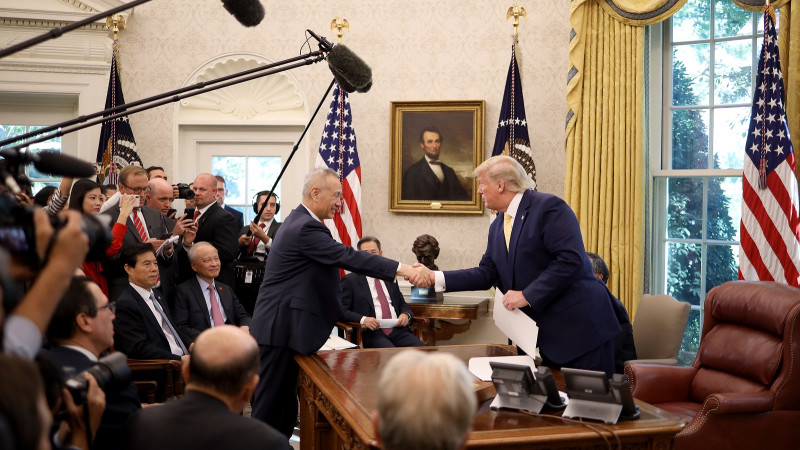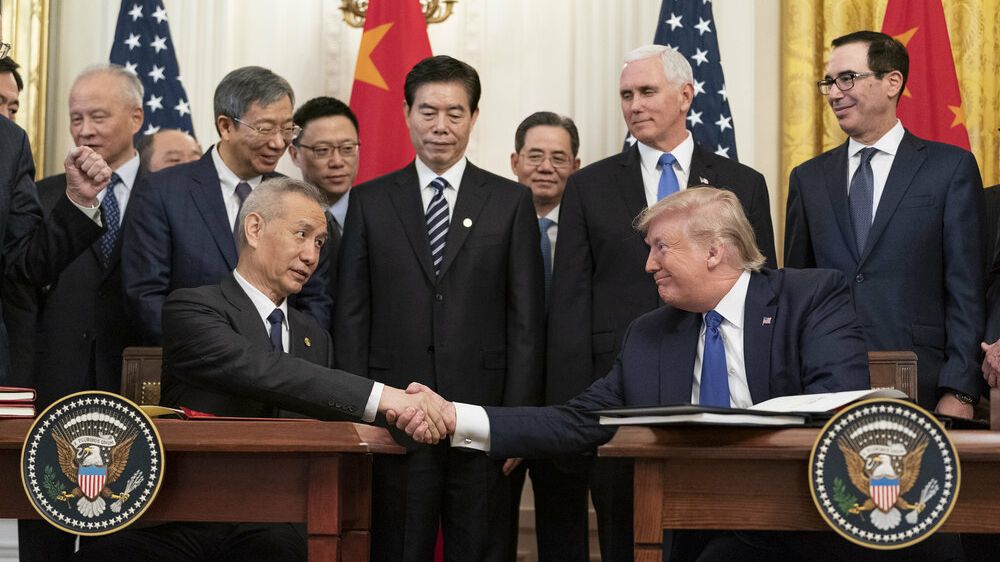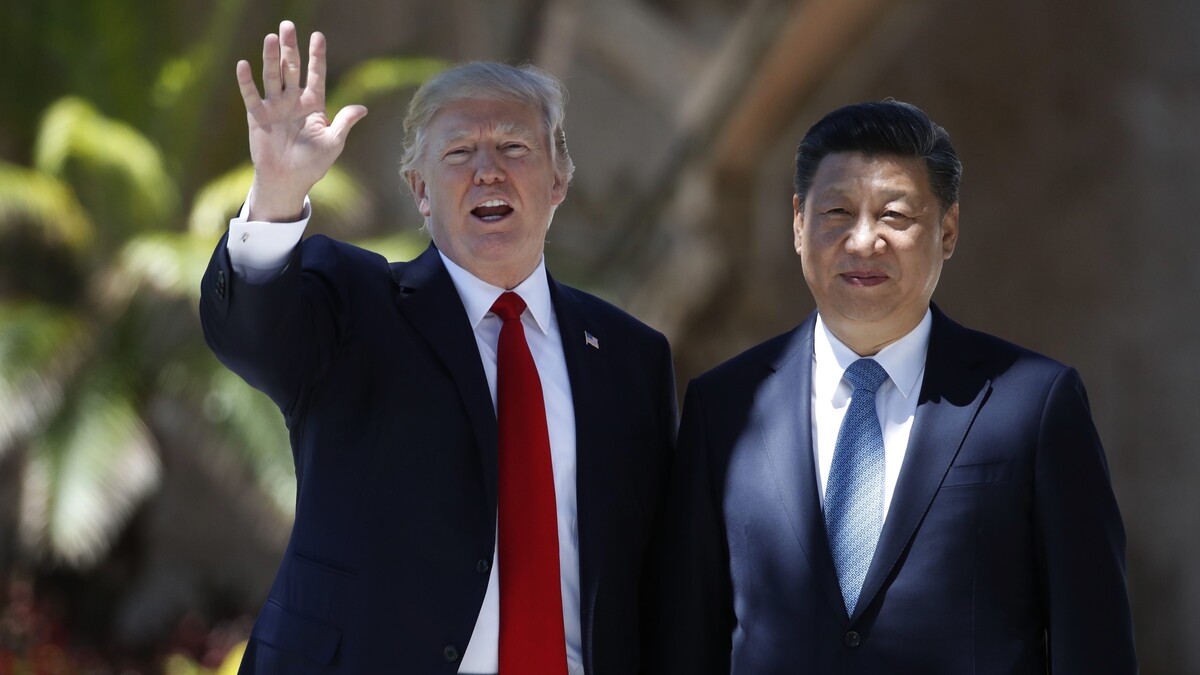Published 14 October 2019 | 4 minute read
The general reaction to the US-China Phase One trade deal has been that while the agreement itself accomplishes relatively little, it should be regarded as a positive step. While this analysis is fair, it overlooks three important points.
The just-announced US-China phase 1 trade deal will forestall US tariff increases on $250 billion in trade from China that were scheduled to go into effect on October 15th. In exchange, China has agreed to purchase $40-$50 billion in US agricultural products, along with other unspecified concessions in the areas of intellectual property, financial services, and currency manipulation. The general reaction has been that while the agreement itself accomplishes relatively little, it does avoid a further escalation in tariffs and sets a more constructive tone for future negotiations, and as such it should be regarded as a positive step. While this is a fair analysis, it overlooks three important points.
1. There is no US-China trade deal
This agreement is being characterized as “Phase 1” in what could be a two or three phase negotiating process. However, US and Chinese negotiators did not reach a Phase 1 agreement; they have only reached an “agreement in principle”. This is “trade-negotiator-speak” meaning that we’ve got agreement on the main points but still have to work out the details. And in any trade agreement, the devil (and the hardest work) is always in the details.
Given the relative modesty of the agreement, it’s surprising that negotiators will need up to an additional 5 weeks to work out the actual text of the agreement. That suggests that there are still some very significant differences in position between the countries. We might be further away from an agreement than initially portrayed, at least from the US side.
While President Trump proclaimed the trade talks to be a “lovefest”, Chinese state-owned media outlet Xinhua was considerably more subdued, saying only that both countries “agreed to make efforts towards a final agreement”. And far more media attention in China was focused on President Xi’s trip to India, rather than the “very substantial” deal (in President Trump’s words) reached in Washington.
The bottom line? Despite the upbeat characterizations by the US President, we don’t actually have a “deal” – at least not yet.
2. A potential landmine looms
In any case though, one issue looming on the horizon could potentially scupper finalization of the agreement in principle. The White House is scheduled to announce its decision on whether to impose section 232 national security tariffs on global automotive imports on November 13th. Such an action would hit leading automotive exporters like Germany and Japan especially hard, but don’t forget about China.
The automotive investigation includes not just finished motor vehicles, but also automotive parts. And although China does not have a robust indigenous auto industry which provides finished Chinese vehicles to the US in significant numbers, it does have one of the largest automotive parts industries in the world. In fact, China is a major cog in the global automotive supply chain and roughly 20 percent of its automotive parts exports head to the US.
Could the “agreement in principle” hold together if China (along with other automotive exporters) were hit with tariffs that are expected to be in the 25 percent range?
This would of course be compounded by the additional round of tariffs on $156 billion of Chinese products already scheduled to go into effect on December 15th. These tariffs were left entirely untouched by the interim agreement.
3. Santiago raises the stakes
The annual APEC Leaders Meeting will take place this year in Santiago, Chile on November 16-17th. This would provide an opportunity for President Trump and President Xi to meet in person and formally sign the agreement just reached in Washington. This impending face-to-face meeting between the Presidents raises the stakes considerably.
Chinese officials were by all accounts stunned by the failed Hanoi Summit between President Trump and North Korean leader Kim Jong Un last year and are determined to avoid the possibility of a similar “failed” face-to-face meeting between President Xi and President Trump.
This has a couple of implications. China will dig in its heels to keep the terms (and expectations) surrounding the agreement modest. This would lower the bar for sealing the deal and subsequently achieving compliance – while also limiting the fallout if things somehow get derailed.
For example, while the US emphasizes the extremely high dollar value of anticipated Chinese agricultural purchases, China has stressed that any potential purchases would have to be in line with economic need and WTO rules which limit market distortion and trade diversion (i.e. imports from other countries such as Brazil could not be disrupted). This will be very difficult to reconcile and is just one of the many details yet to be worked out.
If terms and expectations can’t be satisfactorily managed before Santiago, China could well conclude that no deal (or a further delay) is better than a deal that could potentially – and publicly – blow up.
To this point, and perhaps tellingly, official Chinese statements have attempted to tamp down expectations by omitting any reference to President Trump’s desire to sign an agreement in Santiago. In fact, China has been reticent on specific commitments from the agreement in principle, opting instead to refer to the “substantial progress” that was made during the Washington talks.
Where does all this leave us? Under the best circumstances, we’ll have an agreement in perhaps 5 weeks’ time that accomplishes little of substance other than forestalling one round of scheduled tariff escalation, but hopefully builds confidence. Under the worst case, a deal which appeared at hand (as was the case in May) will once again slip away, further eroding trust and momentum. Either way, the hard work of resolving the structural frictions between the US and China will continue to be a long-term endeavor.
© The Hinrich Foundation. See our website Terms and conditions for our copyright and reprint policy. All statements of fact and the views, conclusions and recommendations expressed in this publication are the sole responsibility of the author(s).







